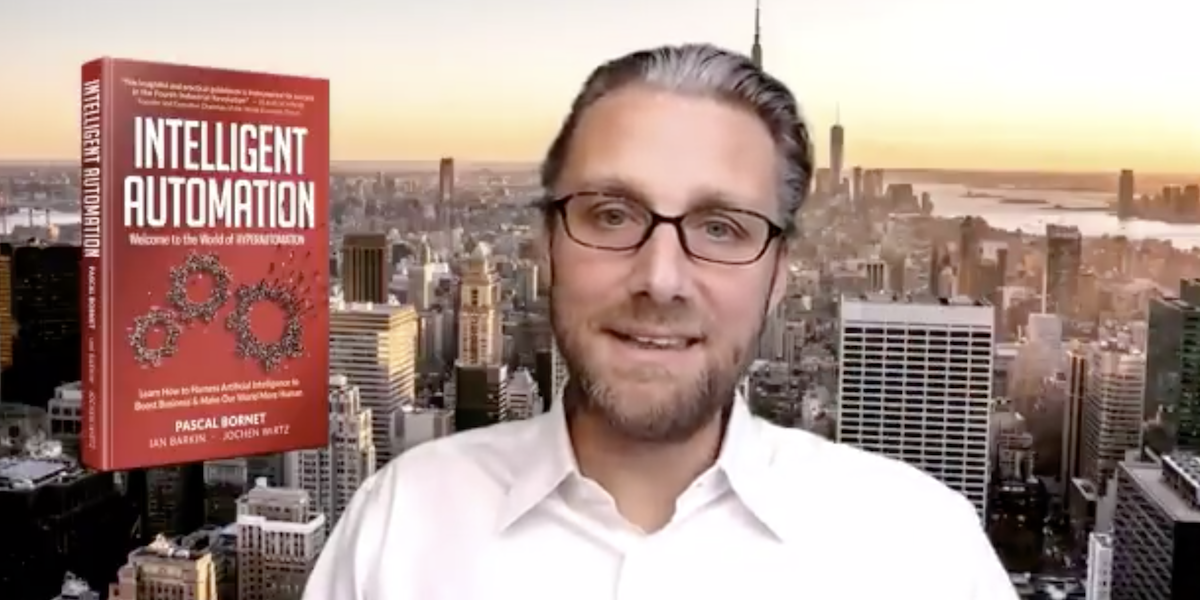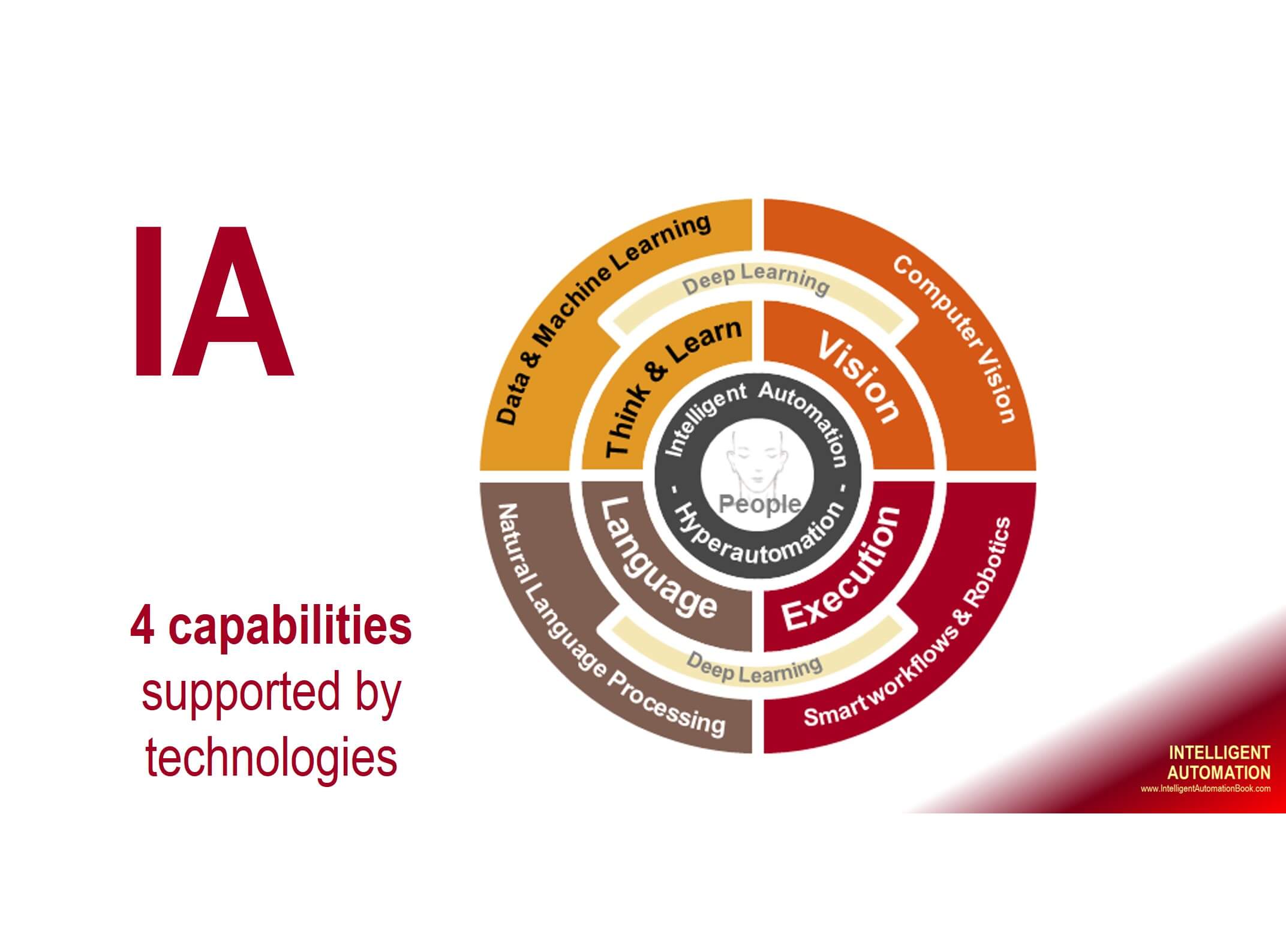What You Need to Know About the Age of Intelligent Automation

“Intelligent automation (IA) represents an opportunity to refocus society on the most fundamental human values.”
I was thrilled to join UiPath for the Reboot Work Festival last month and talk about my research, book, and the future of intelligent automation.
In my presentation, I touched on how IA works, the awful pictures of work today that IA can help free us from, and how companies can succeed with transformation through it. In today’s post, I’ll summarize those insights so you can start 2021 with the knowledge and tools you need to scale automation this year and beyond. 🚀
What the new generation of intelligent automation looks like
Most simply, IA aims to automate end-to-end processes on computers and sits at the crossroads of artificial intelligence (AI), robotic process automation (RPA), and workflow and cloud platforms. Some have described this as “hyperautomation” or "cognitive automation," both of which I consider as synonyms.

Now, with a tool as powerful and revolutionary as IA, it’s tempting to ask exactly how much of our work as humans can automation take off our plates. The answer? Just enough, and not a minute more.
After all, IA works together with humans to bridge people, organizations, and processes. It’s built for the people, by people and centers humans smack in the middle of the new future of work—one where we’re all freed from the laborious work that weighs us down so we can focus on the work that brings us joy.
I broke down the anatomy of the new generation of IA into four parts:
Vision, which acts as the eyes of the new automated workforce. Computer vision empowers use cases, like automated online diagnosis for medical issues such as burns and skin diseases.
Execution, which acts as the ‘hands and legs’ of the automated workforce. This includes your smart workflows and robots that support your IA initiatives.
Language, which acts as the ‘mouth and ears’ of your automated workforce. Through natural language processing (NLP), this part of the IA equation helps software robots talk and understand conversations with colleagues and customers.
Thinking and learning, which is powered by machine learning, acts as the ‘brain’ of the new automated workforce to make possible such powerful use cases as helping educators measure student attention and adjust classrooms to the level of engagement of classes.

By combining these four parts of IA, we can make some mind-blowing global impacts. Here’s what that looks like.
The ugly, awful, no good work that IA can help us avoid
Let’s be honest with ourselves: No one, and I mean no one, enjoys doing and processing paperwork (or other laborious, time-consuming transactional work). In fact, according to a Gallup report, 85% of employees globally aren’t fulfilled by their work—which means we’re losing out on $7 trillion in productivity.
IA can help.
As I discussed during my Reboot Work Festival session, IA is uniquely positioned to free employees from the laborious tasks that eat up their time, to refocus them on more exciting activities and eventually augment their capabilities. In doing so, IA transforms everyday workers into superhumans who can get insight from organizational data within seconds.
During my session, I outlined four unfortunately common realities that hinder human work and progress today (and how IA can free us from them):
Offices overrun with physical paper in need of processing.
People standing in mind-numbingly long lines (even during 2020) to get train tickets or help with common banking issues.
Physicians burning out due to the burden of administrative work on top of their heroic work during the pandemic.
Oceans and communities broken down by ecological issues such as pollution and food scarcity that no one really has the time to take care of because we’re too busy with our routine daily jobs.
At a glance, these four kinds of problems may only seem to be united by their misfortune. But what they have in common is that they’re all issues that can be alleviated with IA.
Manual administrative work is error-prone and slow. And whether it’s being done in the back office or in real-time customer-facing roles, the result is the same: slow, spotty service that annoys customers and makes work harder for employees. This isn’t just frustrating. It also has a real customer cost; a whopping 96% of unhappy customers don’t bother giving negative feedback, and 91% will just leave without a word.

IA has the potential to improve customer satisfaction by more than 50%, according to my research, and to reduce contact center workloads by the same percentage.
In the medical field, 83% of healthcare organizations say physician burnout is a major problem, and that was before the pandemic. A big contributor to this burnout was laborious work that could be automated with IA. When done, my research showed that IA could save more than 10 million lives per year by helping physicians focus on lifesaving work, as well as assisting them in disease diagnosis.
Finally, I previewed how IA can help with issues as lofty as climate change and starvation. In automating away the tedious work that distracts us from our bigger missions, we can shift the power of human ingenuity to higher-risk decisions that can save the world. Without this automation, we’re too busy with full-time jobs to take a step back and contribute to something larger than ourselves.
Let’s say, for instance, that automation can cut down on 30% of your workload per week by taking over your most time-consuming tasks. That’s 30% of your time you can allocate to your family, your community, and our planet.
IA can then help us to make our world more human.
Whether we’re using IA to cut down on the number of forms we need to process, or we’re using it to help power a global generation of superhuman workers, my hope is that it’s clear that IA will revolutionize how humans work.
How companies succeed in IA transformation
In 2020, 50% more companies started their IA journey than in 2019, with 73% of executives reporting that their organizations had started down the road to automation.
However, despite massive gains in the number of companies exploring IA, only 15% had successfully scaled more than 10 automations.
Why is that?
Well, even the most motivated organizations struggle to scale IA because of a lack of automation foundation, siloed teams and technologies, and fragmented processes. Deloitte backs this up with one of their recent global IA surveys, which shows that process fragmentation, lack of IT readiness, resistance to change, and lack of a clear vision were some of the top barriers to scaling.

To combat these hurdles, I recommend that leaders looking to scale IA focus on five things:
Always put people in the center of IA transformation, because without human ingenuity, there is no IA.
Start with a strong and healthy automation foundation, sponsored by management, and that can support greater process volume down the road.
Combine IA capabilities, such as machine learning, chatbot agents, computer vision, and RPA, to create synergies and automate complex end-to-end processes to speed up workflows, improve customer and employee experiences, and reduce costs.
Democratize IA so everyone can build automation applications using low-code tools to accelerate the speed of scaling, support more digitalization, and break down knowledge silos.
Accelerate IA implementation with technology that supports your full automation ecosystem, such as the UiPath Platform for end-to-end automation.

When automation leaders focus on the five initiatives I’ve outlined above, they’ll be able to scale IA seamlessly to provide better service to their customers and create more enjoyable work for their employees.
Embrace the power of IA to change how you (and the world) work
We’ve officially entered a new age of automation, accelerated by global shifts toward remote work and by the need for more operational efficiency than ever. IA is your ticket to carving out your company’s mark on the history of work.
Editor’s note: views represented in this blog post belong to the author and are not necessarily representative of UiPath.

Author, Intelligent Automation
Get articles from automation experts in your inbox
SubscribeGet articles from automation experts in your inbox
Sign up today and we'll email you the newest articles every week.
Thank you for subscribing!
Thank you for subscribing! Each week, we'll send the best automation blog posts straight to your inbox.



